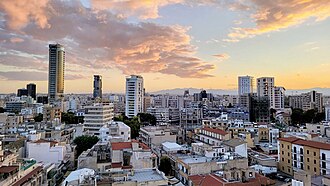Planning a trip to Cyprus’s capital? Discover what to expect from Nicosia weather year-round, including seasonal tips and the best times to visit.

Nicosia, the vibrant capital of Cyprus and the last divided capital in the world, offers more than just history and culture — it also comes with its own unique climate. Knowing what to expect from Nicosia weather will help you pack smart, plan activities, and enjoy your stay to the fullest.
🌍 Nicosia’s Climate: What Makes It Unique?
Unlike Cyprus’s coastal cities, Nicosia is inland, which means it experiences hotter summers and colder winters. It’s located in the Mesaoria plain, which can feel significantly warmer than the coast during summer and chillier at night in winter.
Nicosia has a semi-arid Mediterranean climate, characterized by:
- Long, hot and dry summers
- Short, mild and rainy winters
- Low humidity compared to coastal areas
☀️ Summer in Nicosia (June – August)
- Temperature: 33°C to 42°C (can exceed 44°C during heatwaves)
- Rainfall: Almost none
- Weather: Extremely hot, sunny, dry
Tips:
- Avoid being outside between 12–4 PM.
- Wear lightweight, breathable clothing and stay hydrated.
- Most locals escape to the coast or mountains on weekends.
🍂 Autumn in Nicosia (September – November)
- Temperature: 22°C to 35°C in September, cooling to 15°C by November
- Weather: Warm and pleasant, light rain possible by late October
Why Visit Now?
The heat eases, cultural life resumes after summer, and it’s ideal for walking tours, museums, and local events like the Nicosia Book Fair or Open House Nicosia.
❄️ Winter in Nicosia (December – February)
- Temperature: 7°C to 17°C
- Weather: Mild days, chilly evenings, occasional rain
Good To Know:
- It rarely snows, but night temps can drop below 5°C.
- Heaters are used indoors; pack a jacket and layers.
- A great time to enjoy local cafés, museums, and winter sales.
🌸 Spring in Nicosia (March – May)
- Temperature: 16°C to 28°C
- Weather: Sunny, green surroundings, comfortable climate
Ideal For:
- City walks, historical site visits, outdoor dining
- Spring festivals and traditional Cypriot Easter celebrations
🗓 Best Time to Visit Nicosia
The most comfortable months to explore Nicosia are March to May and late September to early November. These shoulder seasons offer the perfect balance between warm weather and fewer crowds.
If you’re visiting in summer, try to plan indoor activities (like museums or galleries) during midday and explore early in the morning or late afternoon.
🌦 Monthly Average Temperatures in Nicosia
| Month | Avg High (°C) | Avg Low (°C) | Rain Days |
|---|---|---|---|
| January | 15 | 6 | 8 |
| April | 25 | 12 | 3 |
| July | 39 | 24 | 0 |
| October | 29 | 17 | 3 |
| December | 16 | 8 | 7 |
✅ Quick Traveler Tips for Nicosia
- Pack light clothing in summer, but bring a hat and strong sunscreen.
- Carry a light jacket in spring and autumn for cooler evenings.
- In winter, waterproof shoes and a sweater will come in handy.
- Most shops close midday on weekends – plan your outings accordingly.
- Visit the Ledra Street border crossing to explore both sides of the city.
🌟 Final Thoughts: Understanding Nicosia Weather
Nicosia’s charm lies in its contrasts — not just cultural, but climatic. Whether you’re exploring the Old City walls, visiting museums, or enjoying its café culture, knowing the Nicosia weather patterns helps you make the most of every season. No matter when you go, this unique capital always has something to offer. northcyprusinvesting.com, Investra.io

